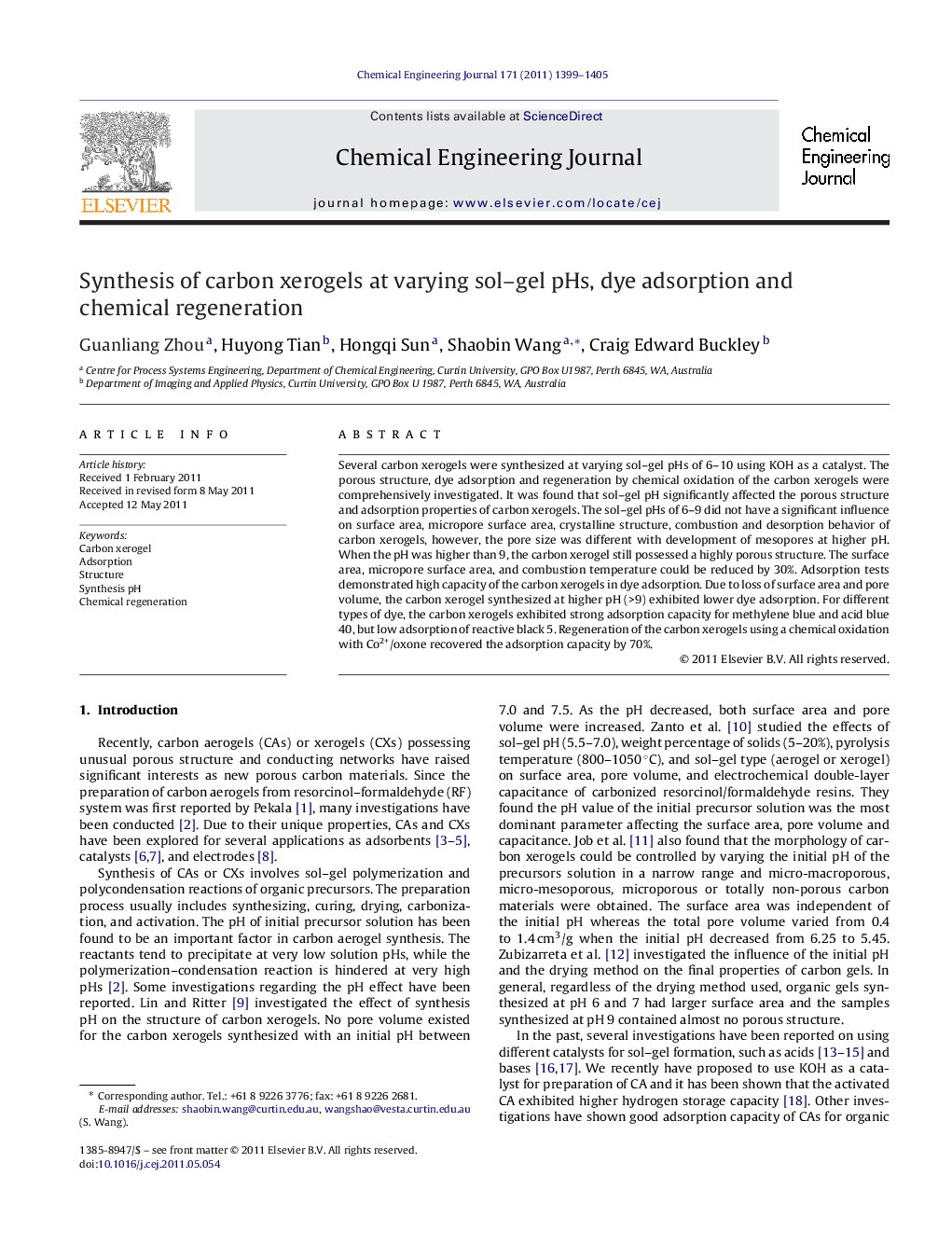| Article ID | Journal | Published Year | Pages | File Type |
|---|---|---|---|---|
| 150939 | Chemical Engineering Journal | 2011 | 7 Pages |
Several carbon xerogels were synthesized at varying sol–gel pHs of 6–10 using KOH as a catalyst. The porous structure, dye adsorption and regeneration by chemical oxidation of the carbon xerogels were comprehensively investigated. It was found that sol–gel pH significantly affected the porous structure and adsorption properties of carbon xerogels. The sol–gel pHs of 6–9 did not have a significant influence on surface area, micropore surface area, crystalline structure, combustion and desorption behavior of carbon xerogels, however, the pore size was different with development of mesopores at higher pH. When the pH was higher than 9, the carbon xerogel still possessed a highly porous structure. The surface area, micropore surface area, and combustion temperature could be reduced by 30%. Adsorption tests demonstrated high capacity of the carbon xerogels in dye adsorption. Due to loss of surface area and pore volume, the carbon xerogel synthesized at higher pH (>9) exhibited lower dye adsorption. For different types of dye, the carbon xerogels exhibited strong adsorption capacity for methylene blue and acid blue 40, but low adsorption of reactive black 5. Regeneration of the carbon xerogels using a chemical oxidation with Co2+/oxone recovered the adsorption capacity by 70%.
► Carbon xerogel with high porous structure can be synthesised at sol–gel pH > 9 catalyzed by KOH. ► Sol–gel pH is an important factor influencing the structure and properties of carbon xerogel. ► Carbon xerogel exhibits high adsorption for various types of dye in aqueous solution. ► Chemical regeneration using sulphate radical can effectively recover the adsorption efficiency.
